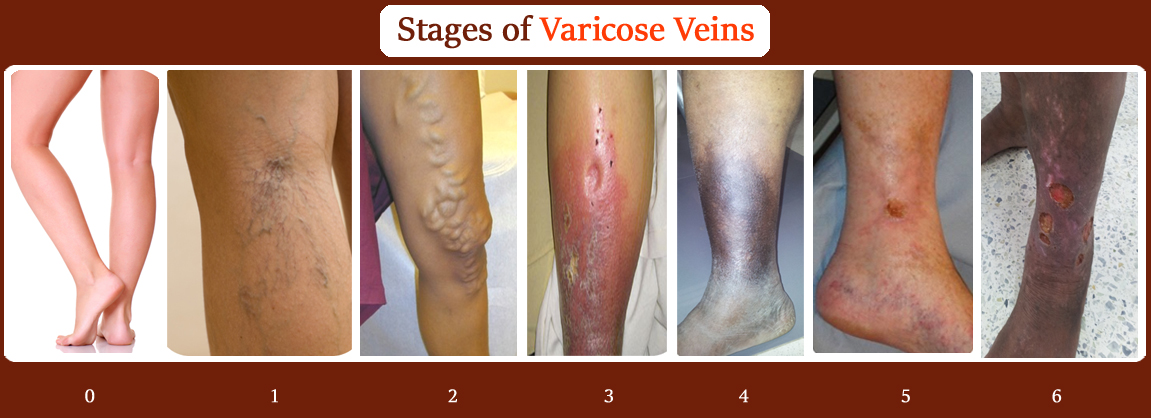
Varicose veins are enlarged, tortuous, swollen veins, raised above the surface of the skin. They can occur anywhere but more common on legs because standing and walking upright increases the pressure in the veins of the lower body. Arteries carry blood from your heart out to your extremities, delivering oxygen deep into the tissue. Veins then return the de-oxygenated blood (now blue) back to your heart to be re-circulated. To return this blood to the heart, your leg veins must work against gravity. Small, one-way valves in the veins open to allow blood to flow upward, toward the heart, and then close to prevent it from flowing backward. Varicose veins occur when the valves in superficial leg veins malfunction. When this occurs, the valve may be unable to close, allowing blood that should be moving towards the heart to flow backward (called venous reflux). Blood collects in your lower veins causing them to enlarge and become varicose.
The causes of varicose veins vary from person to person. The major reason for the cause of varicose veins could be due to weak or damaged valves. Some of the causes that can contribute to the risk of developing varicose veins are listed below.

While visual appearance is a sign of varicose veins, many patients may experience one or more of the following leg symptoms:
Endovenous Laser Treatment for the elimination of varicose veins is quickly becoming the gold-standard in the treatment of varicose veins. Endovenous Laser Treatment uses laser energy, which is simply a highly concentrated beam of light. Medical lasers work by delivering this light energy to the targeted tissue with extreme precision, so as not to affect the surrounding tissue. Lasers have proven their safety and effectiveness through years of use in all types of medical procedures, from eye surgery to dermatology. In the hands of a skilled physician, lasers offer far less risk for complications than conventional surgery.